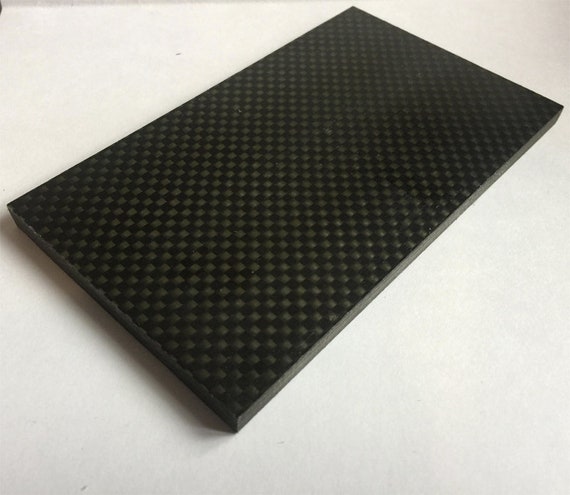Carbon Fiber: What Does It Mean?
A chain of carbon fiber plate atoms is what makes up a carbon fiber keyboard plate fiber, and these atoms are bonded to one another. Because the fibers are so incredibly rigid, strong, and lightweight, they can be utilized in a wide variety of processes to produce superior building materials that can be utilized in any industry. Carbon fiber material is available in a wide variety of "raw material" building blocks, such as yarns, uni-directional, weaves, braids, and a few other types. These "raw material" building blocks are then utilized in the production of composite parts.
-
There are a great number of specialized sub-categories contained within each of these larger categories
-
For instance, the different types of carbon fiber board fiber weave can result in different properties for the composite part, both during the manufacturing process and in the product that is ultimately created
-
It is necessary to have a matrix that is stable for the carbon fiber keyboard plate fibers, which are rigid both in tension and compression, to reside in so that they can keep their shape while being used to make a composite part
Epoxy resin is a fantastic plastic that has excellent compressive and shear properties, and it is frequently used to form matrices like this one. The carbon fiber keyboard plate fibers are what provide the reinforcement for the matrix. Due to the low density of the epoxy, it is possible to produce a component that is not only lightweight but also very robust. When fabricating a composite part, a wide variety of processes, such as wet-layup, vacuum bagging, resin transfer, matched tooling, insert molding, pultrusion, and a great number of other methods, can be used. In addition, the choice of the resin makes it possible to tailor the material to have particular properties. Epoxy selection factors may include, but are not limited to: cure times that are either longer or shorter; ultra-violet resistance; high-temperature formulations; flame retardancy; and increased fracture toughness achieved through the use of additives.

Comparisons With Other Materials Regarding Their Hardness, Rigidity, and Strength
The strength of carbon fiber plate fiber is unmatched. In the field of engineering, it is common practice to evaluate the usefulness of a material in terms of its strength to weight ratio and its stiffness to weight ratio. This practice is especially common in structural design, where an increase in weight may result in an increase in lifecycle costs or in performance that is less than satisfactory. The modulus of elasticity is a measurement that can be used to determine how rigid a material is. Carbon fiber typically has a modulus of 20 msi (138 Gpa) and an ultimate tensile strength of 500 ksi (3.5 Gpa). Both of these values can be found in the table below. Carbon fiber materials with high levels of both stiffness and strength can also be obtained through the use of specialized heat treatment procedures that produce significantly higher values. When compared to other materials, such as 2024-T3 Aluminum, which has an ultimate tensile strength of only 65 ksi and a modulus of only 10 msi, and 4130 Steel, which has a modulus of 30 msi and an ultimate tensile strength of 125 ksi, the strength of this material is exceptional.
A carbon fiber keyboard plate fiber reinforced laminate with a plain weave has, as an illustration, an elastic modulus of approximately 6 msi and a volumetric density of approximately 83 lbs/ft3. Therefore, the ratio of this material's stiffness to its weight is 107 feet. When compared, the density of 4130 steel is 489 lbs/ft3, which results in a stiffness to weight of 8.8 x 106 ft, while the density of aluminum is 169 lbs/ft3, which yields a stiffness to weight of 8.5 x 106 ft. In conclusion, the density of aluminum is lower than that of 4130 steel. Therefore, even a fundamental carbon fiber plate fiber panel with a plain weave possesses a stiffness-to-weight ratio that is 18% higher than that of aluminum and 14% higher than that of steel.
When one takes into consideration the possibility of customizing the stiffness of carbon fiber keyboard plate fiber panels through the strategic placement of laminates, in addition to the potentially massive increase in both strength and stiffness that is possible with lightweight core materials, it is obvious the impact that advanced carbon fiber board fiber composites can make on a wide variety of applications. In the design of beams for tailored stiffness along orthogonal axes, for instance, this concept can be seen in action. Element 6 Composites has developed methods for the fabrication of carbon-fiber tubes for optimal stiffness along each bending axis, with order of magnitude differences in rigidity, and these methods are currently the subject of a patent application. These tubes have a bending resistance that is comparable to that of I-beams, but they also maintain the high torsional stiffness that is characteristic of tubes and are simple to put together.







Comments (0)